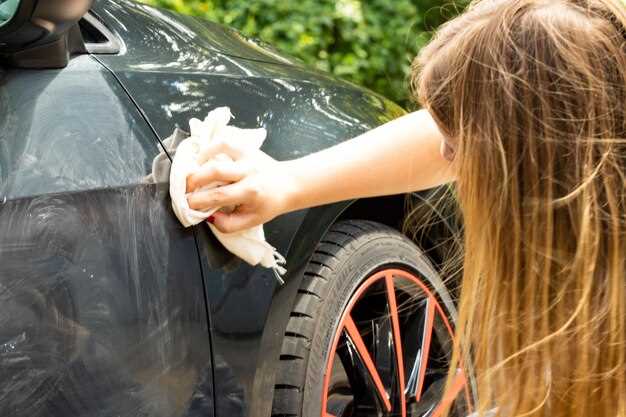
The sun can be both a source of warmth and a hidden enemy for your car’s exterior. Prolonged exposure to UV rays can lead to significant damage to your car’s paint, causing it to fade, oxidize, and lose its luster. Therefore, understanding how to provide effective protection is crucial for maintaining the aesthetic value of your vehicle.
Car paint is designed to withstand various environmental conditions, but the relentless power of the sun can compromise its durability. Over time, UV exposure breaks down the molecular structure of the paint, resulting in discoloration and peeling. By taking proactive measures, you can shield your vehicle from these harmful rays and extend the life of its finish.
Implementing simple yet effective strategies can greatly enhance your car’s protection against sun damage. From using high-quality protective coatings to choosing the right parking spots, there are numerous ways to safeguard your investment. In the following sections, we will delve into practical tips and advice to help you maintain your car’s paint in pristine condition, ensuring it remains vibrant and protected from the sun’s harsh effects.
Choosing the Right Wax or Sealant for UV Protection

Selecting the right wax or sealant is crucial for safeguarding your car’s paint against UV damage. Both products create a protective barrier, but they differ in composition and longevity. Waxes are typically made from natural ingredients, offering a warm, glossy finish. They are easy to apply and reapply, but their protective effects might diminish faster under intense sunlight.
On the other hand, sealants are synthetic and known for their durability. They provide longer-lasting protection from UV rays, often extending up to several months. When choosing a sealant, look for formulas specifically designed to block UV rays, as these will give your car’s paint optimal protection against the sun.
Consider the climate in your area when deciding between wax or sealant. If your vehicle is regularly exposed to harsh sun conditions, a high-quality paint sealant may be the better option. Additionally, many products combine both wax and sealant properties, offering the benefits of both worlds. Always ensure the chosen product is compatible with your car’s paint type for maximum effectiveness.
Regular application of wax or sealant, regardless of your choice, is essential. This routine not only enhances the shine of your car but also prolongs the life of the paint by reinforcing its UV resistance. Following these guidelines will help keep your car’s paint protected and looking great for years to come.
Best Practices for Parking to Minimize Sun Exposure
To effectively protect your car from harmful UV rays and reduce sun damage to the paint, consider the following best practices for parking:
1. Utilize Covered Parking: Whenever possible, park in a garage or under a carport. This provides crucial protection from direct sunlight and significantly reduces the risk of UV damage to your vehicle’s exterior.
2. Seek Shade: If covered parking is not available, look for natural shade, such as trees or large buildings. However, be cautious of potential tree sap or bird droppings that can also harm your car’s finish.
3. Use Car Covers: Investing in a high-quality car cover designed to reflect UV rays can add an extra layer of defense. Ensure the cover is breathable to prevent moisture buildup that could cause corrosion.
4. Avoid Parking Facing West: Parking with the nose of your car facing west exposes it to the sun’s intense afternoon rays. Instead, opt for east or north-facing positions if available.
5. Regular Maintenance: Regularly applying a high-quality wax or sealant can provide an additional barrier against UV rays. This not only enhances protection but also enhances the car’s shine.
6. Window Tinting: Consider having your vehicle’s windows tinted. This can block a significant amount of UV rays from entering the interior and also helps in minimizing heat buildup, protecting the dashboard and upholstery.
By following these parking practices, you can effectively minimize your car’s exposure to the sun, providing essential protection and helping to maintain its appearance over time.
Routine Maintenance to Preserve Car Paint Integrity

Maintaining your car’s paint requires consistent care to ensure its protection and longevity. By implementing a routine maintenance schedule, you can prevent sun damage, fading, and other issues that compromise the integrity of your car’s paint. Here are some essential practices to consider:
- Regular Washing:
Washing your car regularly helps remove dirt, grime, and other contaminants that can harm the paint surface. Use a high-quality car wash soap and a soft sponge or mitt to prevent scratches.
- Drying Technique:
After washing, dry your car with a microfiber towel to avoid water spots. Ensure that the towel is clean and free of debris to prevent any potential damage to the paint.
- Waxing:
Apply wax to your car’s paint every three months. Wax provides an additional layer of protection against UV rays, bird droppings, and tree sap, enhancing the overall appearance and shine of the paint.
- UV Protection Products:
Consider using UV protection sprays or sealants specifically designed for automotive paint. These products create a barrier against harmful sun rays and environmental pollutants.
- Regular Inspections:
Regularly inspect your car for any signs of damage, such as scratches, chips, or fading. Address these issues promptly to prevent further deterioration of the paint.
- Parking Practices:
Whenever possible, park your car in a shaded area or use a car cover to protect it from direct sunlight. This helps reduce the risk of paint fading over time.
By adopting these routine maintenance practices, you can significantly enhance the protection of your car’s paint and preserve its integrity against the damaging effects of the sun and other environmental elements.

